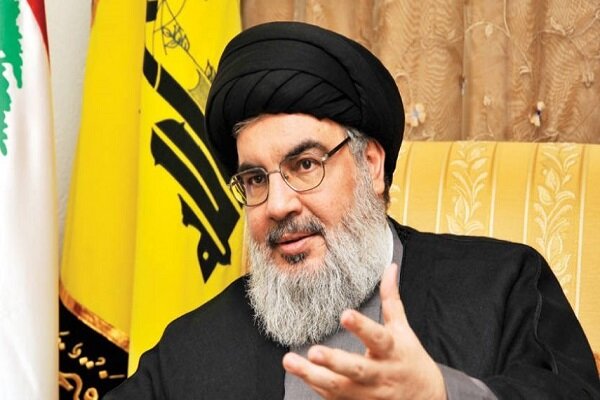American Instigation Between Afghanistan and Pakistan: What Was Martyr Nasrallah’s Prediction?

According to the English section of webangah News Agency, citing Mehr News Agency and Al-Ahed news website, in October 2025 dangerous tensions erupted along the Pakistan-Afghanistan border. Afghan forces responded with cross-border attacks after Pakistani airstrikes targeted positions in kabul and Paktika province. While this appears to be a direct security clash, the conflict conceals deeper and more perilous dimensions-signaling a calculated attempt to ignite turmoil from within the region.
The border developments represent a new chapter in an old U.S.-Zionist scheme aiming to fragment Islamic countries by fueling ethnic, sectarian, and religious conflicts. This strategy echoes warnings previously issued by the late Sayyed Hassan Nasrallah who cautioned that enemies might regard sedition as a more effective weapon than direct military assaults.
Nasrallah’s Warning: Sedition More Dangerous than Occupation
As the 2003 U.S. invasion of Iraq, Sayyed Hassan Nasrallah consistently warned of wars being transformed into internal conflicts orchestrated covertly by foreign powers.He argued that when direct occupation failed to impose dominance, Washington shifted tactics toward internal division through sectarian and ethnic strife.
In his speech marking Lebanon’s liberation anniversary on May 25, 2006, he outlined this plan clearly: “They try to pit us against each other by manufacturing enemies for our nation.They create imaginary foes that succeed due to some among us being ignorant or backward.Thier goal is to sow enmity among Arabs and Persians; turks and Kurds; Baloch; Tajiks; Uzbeks-to build walls of entrenched ethnic hatred so we fight one another instead of uniting with our brothers across our community.”
“the tension between Muslims and christians in Lebanon, Egypt, Iraq follows this pattern as well,” he continued.”The most dangerous conspiracy planned for our nation is religious fanaticism-a focus of political,cultural media and security efforts by both the U.S. government and Mossad.”
This analysis affirms that tensions between Afghanistan and pakistan are no accident but part of an engineered plan designed to fracture ummah unity via inflaming nationalist-religious rivalries-validating Nasrallah’s deep strategic insight rather than mere prophecy.
The Context Behind Pakistan-Afghanistan Tensions
Since Taliban control over Kabul began in 2021 relations between afghanistan’s government and Islamabad have been strained over activities of Tehrik-i-Taliban Pakistan (TTP), which uses Afghanistan as it’s base. Islamabad has launched repeated airstrikes on TTP targets inside Afghanistan provoking Taliban responses.
A crucial factor intensifying this friction lies in its location-an ethnically diverse frontier region prone to exploitation by American-led provocateurs.
The complex demographics along these borderlands include several key components:
- Baloch: Spread across Pakistan, Iran,and Afghanistan mostly marginalized-vulnerable to external agitation;
- Tajiks & Hazaras: Two main Afghan ethnic groups whose relations with Pashtun Taliban remain tense;
- hazara shiites: perennially subject to sectarian-based persecution;
This intricate demographic mix could ignite an internal conflagration with consequences spilling beyond borders-threatening regional stability altogether.
“Sustained Sedition”: A New phase of “Creative chaos”
The American blueprint known as ”creative chaos” has evolved beyond regime overthrow attempts into what may be termed “sustained sedition.” This approach fuels protracted conflicts unlikely resolved through military or political means but instead leading toward continual erosion within states’ structures-and societies overall.
The Tools Implementing America’s Plan:
- Pushing separatist uprisings under rights-based slogans led by ethnic or religious minorities;
- Create chaotic environments designed to weaken institutions using extremist groups;
- Cultivating international sympathy through manipulated media narratives alongside selected human rights activists;
- Lending legitimacy for foreign interventions via civil society organizations;
- Eroding state credibility blaming governments for repression or failures supported through economic sanctions.
Through these means nations become fragile entities hollowed out internally often losing autonomy entirely-with economic sanctions inflicting decisive blows if internal issues resolve partially-as witnessed recently across Syria’s multi-faceted crisis encompassing all above strategies simultaneously.
Possible Future Scenarios
Al-Ahed evaluates current trends anticipating several probable outcomes :
1- Prolonged clashes between Pakistan & Afghanistan possibly leading borders’ fragmentation & loss of control-a highly likely scenario .
2- Ethnic explosion inside Afghanistan possibly involving Tajik-Hazara uprisings considered likely .
3- Escalated armed Baloch insurgency threatening Pakistani territorial integrity viewed as probable .
4- Indirect interventions from Washington or New Delhi backing separatists aimed at further disintegrating central Pakistani governance representing moderate possibility .
5- Formation of coordinated axis comprising Iran ,Pakistan ,Taliban ,and China countering unrest attempts establishing regional stability systems also deemed plausible .


